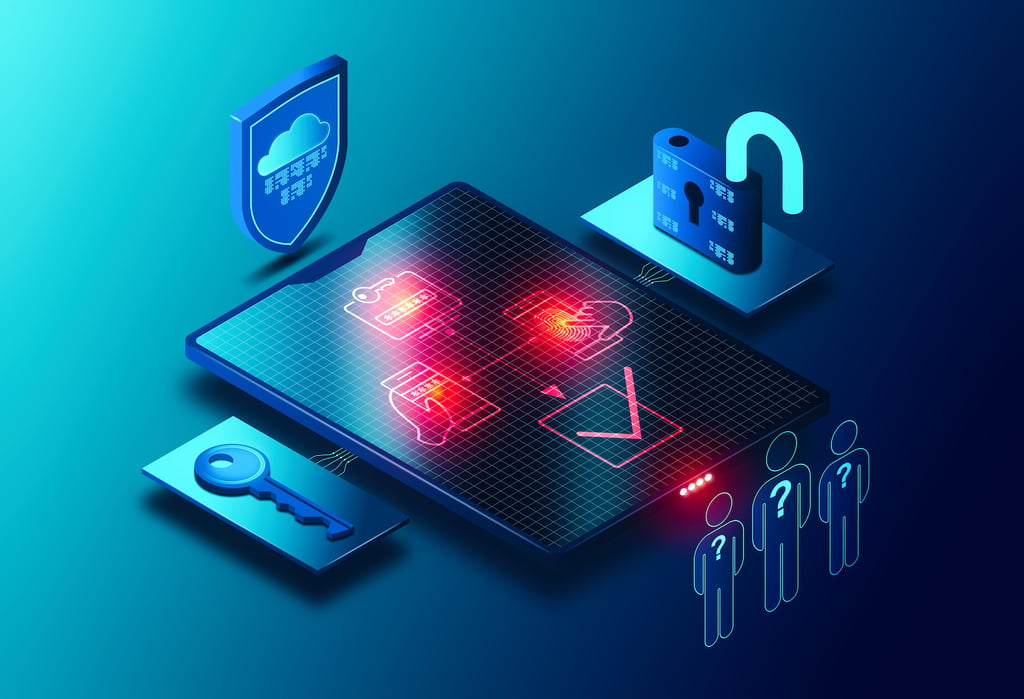
network security
Extended Detection and Response (XDR) is a cybersecurity response strategy that focuses on three core principles: Early detection of indicators of attacks. Fast containment of compromised systems. Rapid eradication of malware from infected systems. The earlier an attack is detected, the easier it is to contain and eradicate it. The longer it goes undetected, the […]

Extended Detection and Response (XDR) is a cybersecurity response strategy that focuses on three core principles:
The earlier an attack is detected, the easier it is to contain and eradicate it. The longer it goes undetected, the more time there will be for an attacker to:
Also see: Top Zero Trust Networking Solutions
Extended detection and response, or XDR, is a collection of cybersecurity tools that detect, prevent, investigate, respond to, contain, and help recover from cyber incidents. The term was coined by the Palo Alto Networks co-founder and CTO Nir Zuk in 2018 at a company event and has since become an industry buzzword.
XDR provides end-to-end visibility into potential threats to networks, clouds, and applications with continuous monitoring on all endpoints, without disrupting operations. XDR typically includes real-time automated monitoring and scanning, behavioral analysis, host intrusion prevention, email protection and remediation technologies, data leakage prevention technology, endpoint encryption, application firewalls, patch management, vulnerability assessment and management tools.
XDR has three parts, they include:
Also see: Steps to Building a Zero Trust Network
XDR proactively correlates data across multiple layers of security – email, endpoint, server, cloud workloads and networks – to help analysts identify threats faster. Endpoints include machines in corporate offices, remote workers’ laptops, tablets and mobile devices.
The infrastructure layer consists of company-owned servers or the public cloud where sensitive company data resides, while the network layer includes routers, switches and firewalls that connect your organization.
XDR uses artificial intelligence and machine learning algorithms that continuously collect contextual information from different sources and apply advanced analytics to it to understand what is happening with your network. Machine learning identifies patterns and anomalies that can’t be detected by human analysis alone while also providing a baseline for understanding what normal looks like on the network.
When a threat emerges, analysts can quickly detect it using XDR’s automated response actions without waiting for user alerts or manual interventions, speeding up detection times. In addition, this provides continuous monitoring of new threats as they emerge.
With XDR’s ability to collect critical data across all endpoints, email, servers and networks—including emerging IoT devices – analysts can prioritize issues in real-time, which ensures faster resolution.
The best part about this technology is that it does all this without being intrusive and with minimal performance impact on endpoints or servers. With XDR, you can identify, contain, and remediate threats before they have a chance to cause significant damage or disruption to your organization’s security posture.
Also see: Understanding the Zero Trust Approach to Network Security
The advanced threat landscape is more challenging than ever, with cybercriminals using stealthier and more sophisticated attack vectors to breach networks and stay hidden for a long period. Extended Detection and Response (XDR) solutions play a crucial role in the fight against cyberattacks by increasing IT visibility and automating response processes to reduce the time to detect suspicious behavior, improve time to resolution, and minimize the impact of attacks on critical business functions.
XDR provides access to raw log data from email, endpoints, servers, cloud workloads and networks – giving you one place to analyze activity regardless of where it originates or ends.
You can customize rulesets and thresholds to balance accuracy with prevention and detect intrusions without disrupting day-to-day operations.
Traditional security technologies rely on pre-defined rules or signatures to identify malicious activity. The problem with this approach is that it becomes exponentially more challenging to keep up with the ever-changing cybercrime landscape.
XDR uses behavioral analysis and machine learning algorithms, which adapt to new attack vectors as they emerge. These methods make XDR more effective at catching unknown malware and defending against zero-day attacks.
XDR automatically detects stealthy threats and responds by taking corrective action, such as applying automated patches or quarantining suspicious files. In addition, XDR enables real-time forensics and malware analysis via automation capabilities, allowing security analysts to focus on high-priority threats.
XDR blocks malware, exploits, fileless attacks and ransomware before they can cause damage. It also prevents phishing emails from reaching inboxes, stops hijacked sessions and removes advanced persistent threats (APTs) like industrial espionage.
Security teams who deploy XDR have reported significant improvements in efficiency, scalability and overall productivity. Security team productivity can be increased by centralizing all network, endpoint, and cloud security policy administration, monitoring, investigation, and response activities into one centralized console.
With a single console and integrated SIEM, security teams can increase operational efficiency and effectiveness by correlating alerts for faster incident response and increased investigation confidence.
XDR integrates seamlessly with network defense tools, including next-generation firewalls, web application firewalls, intrusion prevention systems, anti-malware tools and cloud infrastructure platforms—reducing costs associated with third-party products by eliminating vendor lock-in while increasing flexibility around deployment options.
Also see: Best Network Automation Tools
Unlike traditional security tools, XDR solutions encompass a comprehensive suite of technologies spanning an extensive lifecycle. These technologies include:
As such, organizations using XDR-enabled capabilities have a wider aperture than their counterparts regarding monitoring and protecting their networks, devices, applications and data. The result is more contextually-relevant data that enables more detailed analysis and richer forensics – all with reduced false positives.
XDR solutions are optimized to run on cloud-native architecture and can be deployed on any infrastructure. This enables enterprises to operate with less expenditure and complexity while maintaining high-security levels. XDR solutions seamlessly integrate with other enterprise applications through APIs that offer a flexible approach to the data flow. They also incorporate best practices around governance, risk management and compliance to ensure data is always secure.
XDR solutions enable threat hunting by identifying vulnerabilities, malicious activity and insider threats as they emerge. It does this by analyzing raw data inputs like file systems, endpoints, email traffic and server logs.
Analyzing these inputs provides insights into how attackers behave and how they might breach systems or steal information. XDR solution must display capability in this area because it addresses one of the most critical needs of today’s cybersecurity landscape – preventing new breaches before they happen.
Modern cyberattacks are incredibly complex and sophisticated, often involving multiple components and layers across different IT environments. To address these challenges head-on, XDR solutions employ automated analytics to provide intelligence about incidents and automate tasks based on predetermined policies. Orchestration capabilities allow customers to coordinate responses based on criticality level so that personnel only need to focus on high-priority situations. This reduces the risk of dealing with low-priority issues, which could lead to system downtime and delays.
Also see: Best Network Management Solutions
Threat hunting effectively identifies new attack vectors and malicious activity using pattern-matching algorithms on massive volumes of unstructured data to find anomalies and outliers. By conducting proactive threat hunting across all your data, including network, endpoints, cloud workloads, email traffic, documents, and SIEM events, you’ll be able to detect attacks more quickly and take action before data is lost or stolen.
After an incident has been identified, the next step is triage to determine whether it needs immediate attention or can wait until later. If a response must be given immediately, there are three main types of tasks: contain, eradicate and remediate.
The goal of containment is to stop the attack’s spread as quickly as possible with minimal impact on services and environments. Eradicating malware involves identifying its process, finding where its roots are located (to ensure it doesn’t come back) and cleaning any existing infections. Remediation refers to determining which parts of an environment were compromised by malware so that you can clean them up appropriately.
XDR solutions provide powerful investigation capabilities for responding to incidents. They also offer visualization tools that enable security analysts to create custom dashboards to monitor their networks visually. XDR solutions allow analysts to sift through millions of files at lightning speed and pinpoint anomalous behaviors, such as unusual file activities or network connections.
XDR allows organizations to leverage machine learning to automate and expedite time-consuming workflows to reduce turnaround time and increase efficiency. Organizations will have access to expert knowledge that they wouldn’t usually have due to high costs, limited expertise and geographical distribution – all without incurring high costs.
A SOC is responsible for gathering, processing, correlating and displaying large amounts of structured and unstructured data — including log files, IDS alerts, system configuration changes, and firewall configurations — in real-time to spot trends and emerging threats in near real-time.
This data can then be used to trigger alerts and defensive measures. To achieve this, the SOC gathers data in one place and applies advanced analytical techniques to identify connections between disparate sources of evidence.
Also see: Top Managed Service Providers
There are various types of detection and response solutions.

Aminu Abdullahi is an experienced B2B technology and finance writer and award-winning public speaker. He is the co-author of the e-book, The Ultimate Creativity Playbook, and has written for various publications, including eWEEK, Enterprise Networking Planet, Tech Republic, eSecurity Planet, CIO Insight, Enterprise Storage Forum, IT Business Edge, Webopedia, Software Pundit, and Geekflare.

Enterprise Networking Planet aims to educate and assist IT administrators in building strong network infrastructures for their enterprise companies. Enterprise Networking Planet contributors write about relevant and useful topics on the cutting edge of enterprise networking based on years of personal experience in the field.
Property of TechnologyAdvice. © 2025 TechnologyAdvice. All Rights Reserved
Advertiser Disclosure: Some of the products that appear on this site are from companies from which TechnologyAdvice receives compensation. This compensation may impact how and where products appear on this site including, for example, the order in which they appear. TechnologyAdvice does not include all companies or all types of products available in the marketplace.